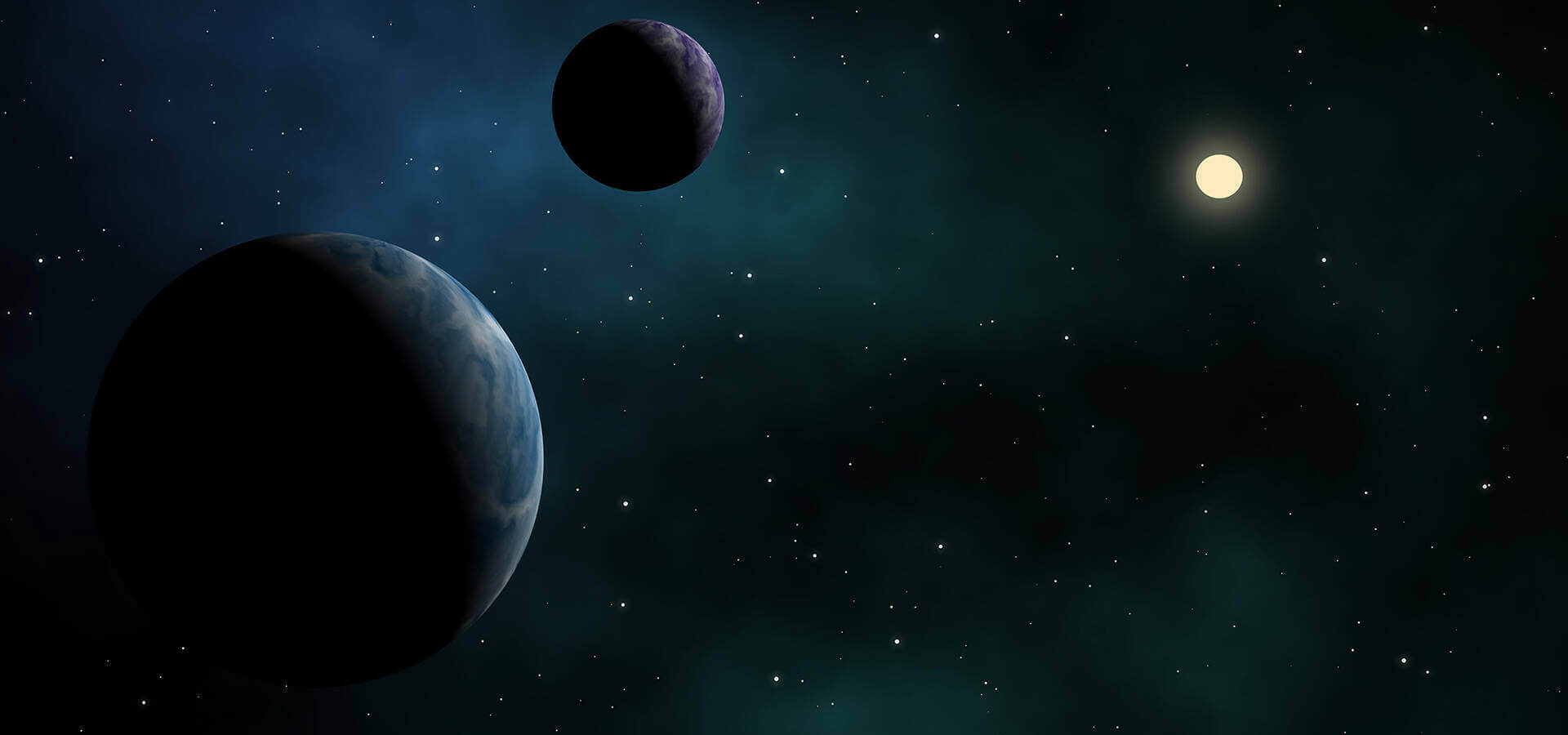Instrument Science

Overview
iLocater’s science motivation is the discovery and detailed near-infrared (NIR) characterization of exoplanet systems using extreme precision radial velocity (EPRV) measurements. The instruments NIR EPRV capabilities are designed to observe targets within the solar neighborhood (within 500 pc), and are optimized for stellar (G-, K- and M-type), brown dwarf, and exoplanet studies. A particular focus is the discovery and characterization of rocky planets orbiting in the habitable zones of K- and M-stars where Earth-mass planets can induce Doppler semi-amplitudes as large as 70 cm/s.
Unlike current ground-based spectrographs that are seeing-limited, iLocater operates at the diffraction-limit and uses single-mode fibers (SMFs) fed by the LBT’s extreme adaptive optics (AO) system. iLocater’s diffraction-limited design delivers high-spectral resolution (R=190,000) and 40 milli-arcsecond on-sky spatial resolution to minimize sky background and optimize instrument systematics. The high spectral resolution allows direct measurement of stellar absorption line asymmetries, facilitating efforts to distinguish between stellar variability and orbiting planets at the sub-meter-per-second level in the NIR. With its diffraction-limited capabilities, iLocater enables unique spatially-resolved spectroscopy of close-separation binaries, obtaining individual spectra of each star with minimal contamination. This is critical for enabling precision transit spectroscopy and stellar characterization in binary systems that will transform our (currently incomplete) understanding of planet formation.
Early science programs with iLocater will include:
- Planet host-star characterization
- Studies of NIR absorption line asymmetries arising from stellar variability
- Rossiter–McLaughlin effect measurements
- Constructing a high-resolution atlas of NIR tellurics; and
- Exoplanet transmission spectroscopy including atmospheric escape via the Helium NIR triplet
Working at the Diffraction Limit
iLocater receives a well-corrected beam of starlight from the LBT AO system. With input images that achieve ~30 times higher spatial resolution than “seeing-limited” designs which are in operation today, iLocater will simultaneously enable high spectral resolution (R=190,000) and high on-sky spatial resolution in a compact optical design. Compared to present-day seeing-limited Doppler instruments, diffraction-limited spectrometers offer several benefits:
- Enabling spatially resolved (diffraction-limited) spectroscopic studies of astronomical sources
- High spectral resolution independent of telescope diameter
- Mitigation of spectrograph illumination errors and modal noise
- Elimination of focal ratio degradation and its evolution in time
- Compact instrument volume
- Cost-effective fabrication using intrinsically stable materials, such as Invar
- Improved environmental control
- Lower sky-background contamination (OH emission, Moon, etc.) by two orders of magnitude
Discovery of Nearby Earth-like Worlds
iLocater will achieve long-term RV precision at infrared wavelengths. By measuring the Doppler reflex motion induced by orbiting planets, such observations will address:
- Which of the nearest stars host terrestrial planets with mass comparable to the Earth?
- Which nearby planets are located in the “habitable zone?”
The First Systematic Study of Planets in Binaries
Binary stars constitute 50% of all stellar systems, yet our understanding of planet formation and evolution is currently based primarily on single stars alone. Due to a selection bias, seeing-limited spectrometers cannot spatially separate the light from two nearby stars. iLocater can circumvent this by using AO optics to prevent spectral contamination. iLocater will enable the first systematic study of planets in close-separation binary systems to address the following questions:
- How does the occurrence rate of planets change as a function of binary star separation?
- How does the occurrence rate of planets change as a function of binary star mass ratio?
- How does the eccentricity distribution of planets in binaries differ from that of single stars?
The First Terrestrial Planet Spin-Orbit Angles
Unlike our solar system, many planets found orbiting other stars have orbits that are “tilted” relative to the spin axis of their parent star. Several planets even have retrograde orbits: they move counter to the direction of stellar rotation. This confounding result is currently an unsolved mystery in planet formation theory. Thus far, spin-orbit measurements have only been obtained for gas giant planets. iLocater will be able to measure spin-orbit angles for terrestrial worlds.
- Are the orbits of small planets like the Earth aligned with the spin axis of their parent star?
Studies of Stellar Variability
The performance of EPRV instruments is no longer dominated entirely by instrument systematics but also by the effects of stellar variability. Spots, plagues, faculae, granulation, p-modes, and other effects imprint the signature of surface inhomogeneities and large-scale movement onto stellar spectra creating a measurable skew in the profile of individual stellar absorption lines. Simulations have shown that the asymmetries in absorption lines caused by stellar variability may only be fully resolved and characterized by recording high resolution (R>150,000) and high signal-to-noise ratio (SNR>300) spectra. iLocater, with its high spectral resolution (R=190,000) and large collecting area of the LBT make it an ideal instrument to undertake such studies.
The Youngest Exoplanets
Star-spots induce spurious Doppler signals that currently preclude the detection of planets around young stars. iLocater is optimized for a wavelength range where the effects of star-spots are minimized. By targeting the youngest stars our instrument will address the following:
- What is the timescale for planet migration through a circumstellar disk?
- What is the mass and density of giant planets found transiting the youngest stars?
Characterizing the Atmospheres of Super-Earths
When a planet transits a small fraction of starlight passes directly through the planet's atmosphere leaving a measureable imprint of its chemical composition. iLocater will acquire the first low/moderate resolution spectra of “mini-Neptunes” and “super-Earths.”